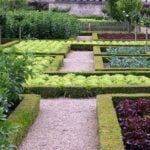Today it will not be difficult to buy a greenhouse: the variety of options on the market is simply amazing – from polycarbonate, metal and wood; rectangular, square and even greenhouse pyramids.
But which one do you need and how to choose the perfect greenhouse? That is what we will talk about.
Ideally, the greenhouse for the garden should be reliable, of high quality, as durable as possible and adapted to the weather conditions in your region. And it is also desirable that it be practical, convenient to use and, of course, inexpensive.
How to choose a greenhouse?
Choosing a greenhouse, each of us is guided by different motives. So, one is quite enough nice appearance of the greenhouse, which will look great on the background of a private house or suburban area.
Others – those who see the greenhouse as a business or household help – put forward more demanding specifications; for them, its appearance also plays a significant role, but not the most important one.

Decide why you need a greenhouse
Before choosing a greenhouse, you need to decide: why do you need it? It’s one thing if you are going to meet the food needs of your own family with it, and it’s quite another if it serves to generate additional income, and over time your passion will grow into a highly profitable business.
Stationary or collapsible?
Decide which model you need: stationary or collapsible. Naturally, with the stationary model, the fuss is several times smaller – they installed it once and forgot it. The folding section will have to be installed and disassembled twice a year, but if at the dacha you only happen in summer, and in the village there are frequent cases of theft of dacha property, then it is more expedient to purchase a folding one.
Decide what you intend to grow in the greenhouse
Your choice will depend on what exactly you are going to grow in the greenhouse.Tomatoes, greens, cucumbers, various seedlings and even berries can be grown in a greenhouse – you decide, but note: various greenhouse crops differ in their growing conditions as well as their requirements for light and humidity. Some plants you can grow together, others will not tolerate any neighborhood and – moreover – only harm each other.
Having decided on what kind of plants you are going to grow, you can choose a greenhouse of suitable height. Agree: it’s one thing to grow peppers, and quite another – cucumbers or tomatoes. So, if you decide to grow tomatoes, it is better to purchase a high rectangular greenhouse, it is she who is ideal for tall plants.
Decide on a growing and watering system
Having decided that you will grow, think about what kind of growing system would be preferable. By the way, the irrigation system will also depend on the growing system – watering with a simple watering can, using a semi-automatic or fully automated system.
Where to install a greenhouse?
A country greenhouse should use the sun’s energy with maximum productivity, and there may not be many such places on the plot, and their size can also be different. You do not want to get a huge 10-meter greenhouse, which ultimately simply does not fit into the planned installation site?
Remember: greenhouses for summer cottages are installed in a place as protected as possible from wind and drafts. After all, external airflow directly affects the temperature regime inside the greenhouse, because of which the air can either heat up sharply or, on the contrary, cool excessively. It is necessary to have a greenhouse in such a way that throughout the day it is maximally illuminated by the sun: it is desirable to install it in length from north to south.
Everyone, deciding to buy a greenhouse, hopes to minimize the cost of its acquisition, and the benefits should also be maximized. Let’s try to figure out: is it possible, and will not a reduction in costs lead to a significant deterioration in the characteristics of the greenhouse?
What are greenhouses? Materials
Today, the market offers more than ever a wide choice of greenhouses of various forms, characteristics, size and price. For their production are used new – as stated by numerous manufacturers, better, more modern and reliable – covering materials, for example, cellular polycarbonate.
Polycarbonate Cell
Cellular polycarbonate is a relatively new material that is known for its strength, 200 times higher than glass. Due to this property, a polycarbonate greenhouse is not afraid of heavy rain, gusty winds and even hail. Another significant advantage of polycarbonate is its long service life – with time (15 years warranty on this material) it will not lose its transparency.
Polyethylene film
Polyethylene film is one of the cheapest and most widely used covering materials. It is quite easily fixed on the greenhouse of any design, perfectly transmits the ultraviolet rays necessary for normal plant development, and serves as an excellent protection of the greenhouse from light frost (up to -3 ° C). It has a density of 100 to 150 microns and a sleeve width of 1 to 3 meters.
Reinforced plastic film
The reinforced polyethylene film has the same advantages as the ordinary one, but due to the special reinforced mesh, it is notable for its increased durability – it withstands not only strong wind, but also hail. Available in rolls, whose width is about 2 meters, density 200 microns, and you can use it for several seasons in a row.
Greenhouse shape
Rectangular greenhouse with a gable roof
It is in such a greenhouse that it is easy to provide the plants with optimal lighting. In addition, it is very convenient and easy to use, which, you see, is also important. But let’s see all the same, what other shape can have a greenhouse.

Near-wall ones greenhouse
Greenhouses that are attached to the walls of buildings are called near-wall ones. As a rule, they have a shed roof. They are deservedly considered one of the most economical, because thanks to this design it is possible to save a lot both on building materials and on accommodation, which, you see, is important, especially if the area of the site is limited. There is almost no difference from which side of the building you attach a lean-to greenhouse, although it is advisable to direct the slope of its roof to the south side.
Arched greenhouse
Arched greenhouse will be a real boon for economical gardeners. It is quite inexpensive, and due to the fact that its construction does not have sharp corners at all, you will need less covering material than, for example, a rectangular greenhouse of the same size. Also, precisely because of this, the service life will be substantially extended.

Pros and cons of various types of greenhouses
For the sake of fairness, I’ll note: whatever the greenhouse for the dacha has, it has both its advantages and its disadvantages.
So, for example, it is possible to cover an arched greenhouse in just an hour, but it will be more difficult to care for plants growing in it: of course, access to plants that grow near the aisle will be wonderful, which cannot be said about plants planted in the extreme row – to get to them you have to kneel down. In the case of a lean-to roof, you can work comfortably enough in a greenhouse, but to cover a similar roof, you will have to make a lot of effort – it is necessary to do it only in dry and surely windless weather, otherwise the film will shake in the wind, and a little later just hang. Of course, if you use glass or plastic instead of film, there will be no such problem.The polygonal greenhouse has its drawbacks: in addition to being one of the most expensive, it is rather difficult to maintain a stable temperature in it. But then, thanks to its original form, it will become a worthy decoration of any garden plot.
General recommendations for choosing a greenhouse
What type of greenhouse to choose, build it yourself or buy one already prepared – of course, you decide.
Optimum height, width and length of the greenhouse
The optimal size of any greenhouse dacha are:
2.5 meters – height,
1.5 meters – the height of the low wall,
3.5 meters – width.
It is in a greenhouse with such dimensions the easiest way to care for plants. Naturally, these parameters are not mandatory, you can change them at your discretion. The only greenhouse should not be more than 6 m in length, otherwise it will be quite difficult to care for the plants in it. If a long greenhouse is simply necessary, divide it into several compartments.
Frame greenhouses – what is better?
The frame of the greenhouse can be made of metal, wood or plastic, but consider the characteristics of these materials.

So, the metal frame will be quite durable (will last at least a decade), strong and relatively inexpensive. Wooden is unlikely to serve you for a long time, even if you treat it properly with good antiseptic agents, but it is cheap enough and easy to maintain. The frame of plastic pipes, perhaps, will last longer: it does not rot, does not need additional processing – painting, impregnation, and so on, but it can be deformed in the sun.
I really hope that the material presented in this article will be useful for you, and you can use it to choose a greenhouse that will meet all your requirements.


















